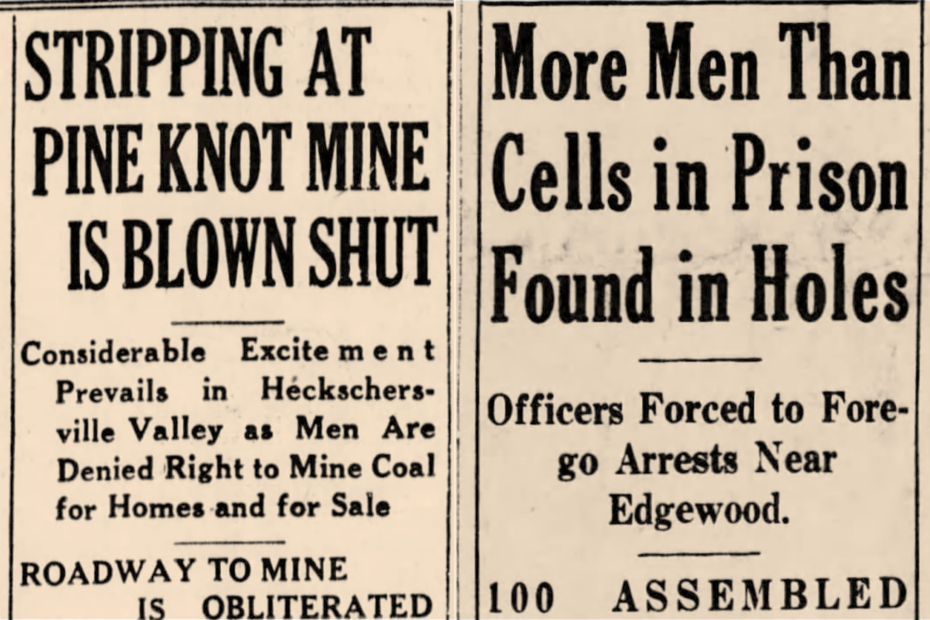Oral history is the skeleton of the Bootleg Coal Rebellion book—what happened in the miners’ own words. But to put together the bigger picture and verify what the interviewees talked about, the book draws on over 3,000 articles from 70 different newspapers and magazines.
Most of that requires reading between the lines. Does the reporter understand what they are reporting on? Why is it being reported? Is there something they aren’t saying? Is an article suspiciously flowery or dramatic? This is why it takes more than one article to verify an event.
In other cases, the headline says it all. This was usually in local newspapers. While events still need verified, local editors had relationships with the bootleg miners, the bootlegger unions, the UMW, and local company officials. Shamokin’s editor (Joe Agor) frequently served as mediator between bootleggers and companies. He also attended nearly every bootleg union function and often reported on them with a pen name (“The Wandering Reporter”). Coaldale’s editor, James Gildea, was even more active. He was president of the Panther Valley Equalization Committee, which repeatedly marched on company headquarters and called strikes when the company tried to close mines or lay off workers. From there, Gildea won a bid for US Congress and became the bootleggers’ representative in D.C.
Safe to say, these editors knew what was going on.
Here’s a sample of some of the most clear headlines from this time.



![4 Officers Driven Out of Bootleg Coal Field: Men, Women and Children Join in Attack on Coal Company Police After Holes Are Blown Shut; Guard is Posted to Protect [Bootleg] Mines. Shamokin News-Dispatch, Apt 23 1935](https://i0.wp.com/www.bootlegcoal.com/wp-content/uploads/2023/03/img-274x1024.jpeg?ssl=1)
![[Governor] Earle Refuses Use of State Police to Oust Bootleggers. Operators "Amazed". Charge Operators Refuse to Help Give Men Work, Shamokin News-Dispatch, Sep 30, 1935](https://i2.wp.com/www.bootlegcoal.com/wp-content/uploads/2023/03/refuse-to-send-police-highlight.png?ssl=1)
![[Governor] Earle Refuses Use of State Police to Oust Bootleggers. Operators "Amazed". Charge Operators Refuse to Help Give Men Work, Shamokin News-Dispatch, Sep 30, 1935](https://i1.wp.com/www.bootlegcoal.com/wp-content/uploads/2023/03/refuse-to-send-police-490x1024.png?ssl=1)

